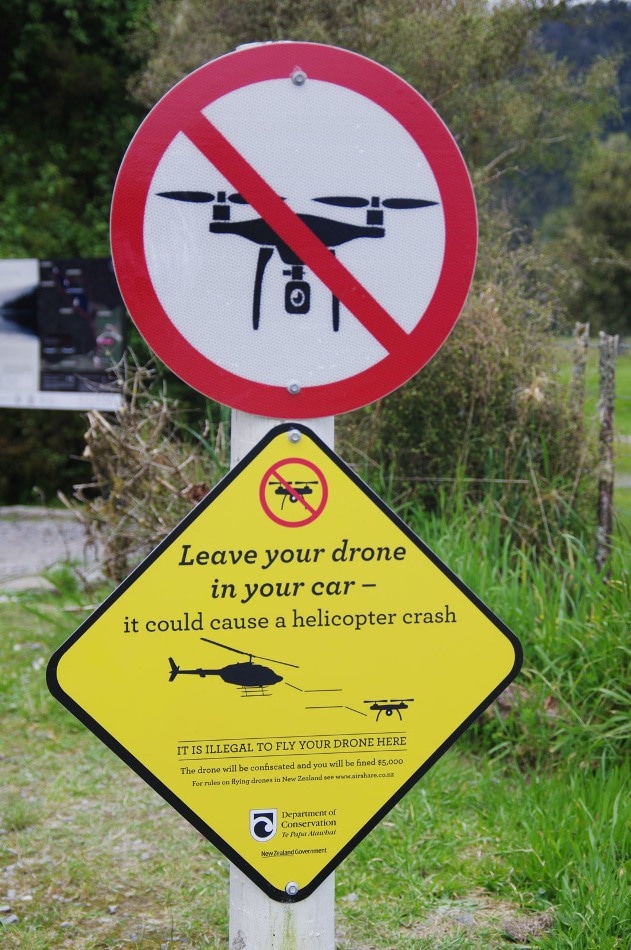Jul 2 2019
The sudden increase in the number of drones across the world has been accompanied by growing reports of close misses with commercial aircraft.
 No drones allowed in the vicinity of helicopters. (Image credit: Michael May)
No drones allowed in the vicinity of helicopters. (Image credit: Michael May)
In fact, in 2017, a Canadian passenger aircraft collided with a drone during landing, barely escaping catastrophic consequences. For aircraft, bird-strike tests are compulsory. However, to date, no equivalent standard test procedure is available for collisions with drones.
To gain important insights into the outcomes of a collision between a drone and an aircraft, the Fraunhofer Institute for High-Speed Dynamics, Ernst-Mach-Institut, EMI (Fraunhofer EMI) is now intending to develop a test bench for recreating different collision situation with complete drones.
In recent years, the occurrence of drones affecting air traffic has increased. In 2018, 158 cases were reported at German airports. In fact, Germany’s federal police have issued a warning of a huge threat represented by unmanned aerial vehicles. In early May 2019, flight operations at Frankfurt Airport were forced to shut down totally for a short period after a drone was sighted.
By 2030, it is expected that the total number of drones in commercial and private use in Germany will increase to 847,000—an increase of around 80%. Drones are a threat to both aircraft coming into land and low-flying helicopters. Pilots live in panic of a drone striking the engine, the cockpit windshield, or the leading edge of the wings.
Experts believe that more damage is caused to the aircraft when it collides with a drone than with a bird. Aircraft should go through a standard test to evaluate their tolerance to bird strike prior to being certified for use. However, no such regulations exist in the case of drones. Scientists from Fraunhofer EMI in Freiburg are eager to see changes here.
From a mechanical point of view, drones behave differently to birds and also weigh considerably more. It is therefore uncertain, whether an aircraft that has been successfully tested against bird strike, would also survive a collision with a drone.
Dr Sebastian Schopferer, Project Scientist, Fraunhofer EMI
A Major Threat to Safety
Preliminary impact tests with drone motors and batteries have corroborated the threat.
“Using compressed air, we accelerated these two components to speeds ranging from 115 to 255 meters per second and fired them at aluminum plates up to eight millimeters in thickness that were mounted in a test bench,” Schopferer described. Considering their weight, both the motor and the battery can lead to significant damage: “There was substantial deformation and indentation of the plates, and the drone battery and engine were completely destroyed.” A high-speed video camera was used to record the result of the tests.
The main aim of this sequence of tests is to find out the transfer of momentum at the instant of impact with the two above-mentioned components and also to study the associated damage to aircraft materials like fiber composites and aluminum alloys. Along with these dynamic studies, scientists also carried out several quasi-static pressure tests so as to identify the rigidity and strength of the drone components. These outcomes will have an important role to play in the derivation of numerically efficient, predictive simulation models that can be subsequently used by the aviation industry to establish new and valuable findings of the drones’ impact behavior. The use of such models in the design stage will make it easy to evaluate the resistance of new aircraft parts against the impact of a drone.
Acceleration Tests with Complete Drones
In order to recreate realistic impact scenarios, scientists are now aiming to develop a new kind of test bench for examining the impact of complete drones with a maximum weight of 3 kg and flying at speeds of up to 150 m/second.
We will be able to investigate the impact and fragmentation of complete drones during collision with both rigid and flexible targets and thereby study the presumably catastrophic effects of a drone strike for an aircraft. Tests in this weight class of drone have never been carried out before.
Dr Sebastian Schopferer, Project Scientist, Fraunhofer EMI
The tests will be carried out with a range of drones, including both semi-professional and amateur models, which weigh from 1 to 3 kg. These examinations will not only benefit the aircraft manufacturers but also benefit the aviation authorities, offering them with vital information for a more detailed evaluation of the danger to aircraft posed by autonomous vehicles.